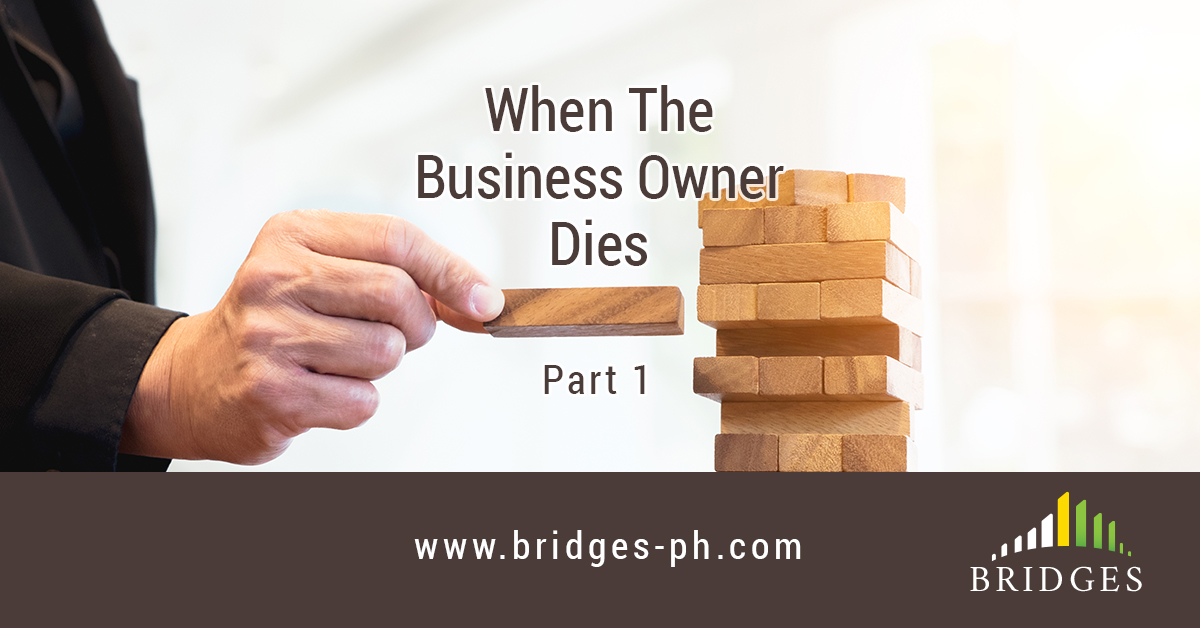
A proper and well-thought-out business plan is essential for any business to succeed; from the launch, marketing of the goods or services and doing the accounting books to setting in stone the vision and strategizing each action plan to achieve the business objective. However, there is one crucial part of business planning that many neglect to incorporate into their blueprints. It is the safety net program that provides a cushion for the business and the people involved when the business owner dies.
Business growth and stability is a more welcomed topic than the hard-to-sell message of death and its consequences. The truth and reality of the latter, however, is a fact that a business owner has to face while he is still alive and capable of creating that safety net program. Critical to this program is the understanding of the different roles the business owner plays in the other areas of his life. Is he the key person and the brain behind the business? How many employees are dependent on his expertise for income? Does he have family who look up to him as the sole breadwinner? Is there a successor already being mentored and trained?
Each type of business organization has its special features and limitations; hence, each is diverse and unique from the others. Yet the central fault line brings about a common denominator that can be summarized into one phrase. What do you want to happen to your business and your business interests after you die?
Risks When The Business Owner Dies
(Sole Proprietorship)
- The business dies with its owner.
- All personal assets are considered business assets. They will be used to pay off liabilities such as credits or debts.
- The employees are left with no continuous income.
- The owner’s family income is crippled.
- The legacy of a business passed on to generations will never be realized.
- Customers whose businesses rely on the products sold or services rendered are directly affected.
- Consumers dependent on the products sold or services rendered are directly affected.
- The heirs are expected to comply with government requirements on business cessation and transfer of estate.
Risks When A Partner Dies
(Partnership)
- The partnership is automatically dissolved.
- The surviving partner is responsible to oversee the disposal of all business assets and compliance to government requirements on business cessation.
- The heirs are called upon to liquidate deceased partner’s personal assets to pay off liabilities such as taxes, credits or debts.
- The heirs are responsible in shouldering the estate tax.
- The deceased’s family income is crippled.
Risks When A Shareholder Dies
(Corporation)
- The heirs inherit the share of the deceased shareholder.
- The heirs have voting rights.
- The heirs are responsible in shouldering the estate tax.
- The deceased shareholder’s family income is at the mercy of the surviving shareholders.
- The harmony of the business is disrupted.
A safety net program should be customized to tailor-fit the profile of the business owner and articulate his wishes regarding the continuity of the business. In Part 2 of this blog series, possible solutions and available instruments will be discussed to address the most common concerns and fears that surface when death and its consequences are on the table.
Whether you are an entrepreneur, an sme business owner or a corporate shareholder, complacency in running your business should never be the case. It is not only a logical path but also a visceral decision to have a firm and comprehensive business plan. Let us assist you in creating your personalized safety net program and walk with you as you continue to grow and expand your business. Call our office today.
Services We Provide - http://www.bridges-ph.com/services/
linkiNG you to opportunities,



